
SHAH ALAM: IT appears that we are getting two sets of a China made logistics support bridge, supplementing the various British Bailey-style prefabricated and quick built bridges already in service (most are in storage) with the Army. Apart from the Army, the Public Works Department also have a number of these bridges in storage for emergency use.
That we are getting China made bridges was revealed when the Eperolehan website published a tender on May 12 to find a MTO to transport two sets of logistic support bridges from Zhenjiang, China to Port Klang in Malaysia. The final destination is the 91 Ordnance Depot, Batu Kantomen camp in Kuala Lumpur.
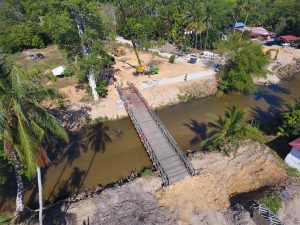
The tender for the two logistic support bridges was issued in May, last year. From the tender documents:
The Logistic Support Bridge is required by the Malaysian Army as a line of communication for single-span range 40 m up to 80 m with a road width of 4.2 m to ensure the movement of troops, combat supplies, and other logistical support to the forward troops from and within the Communication Zone are not hindered by enemy actions.
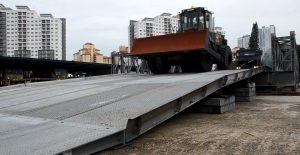
The tender for bridges was awarded to Stare Resources Sdn Bhd with a LOA of RM17.2 million.
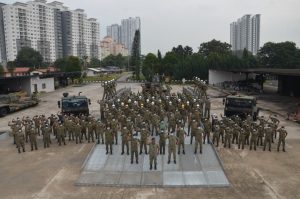
Anyhow, I have no issues whatsoever with the Army buying these bridges from China. As long it is as cheaper and as good as the ones we bought from UK company no one should have issues with it. What is a Bailey style bridge then? From the Internet:
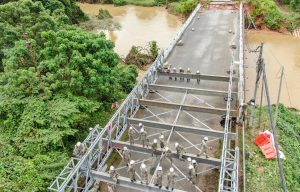
The Bailey bridge was invented by British engineer Donald West Bailey in 1938 for war. A Bailey bridge is a kind of bridge made of welded modular panels and parts. It is also called the Bailey truss bridge because of the steel truss construction structure. As the components are single pieces and very light in weight,a bailey bridge can be assembled and transported easily. A Bailey truss bridge is suitable for various spans and loads.
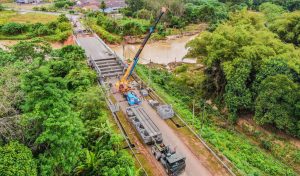
— Malaysian Defence




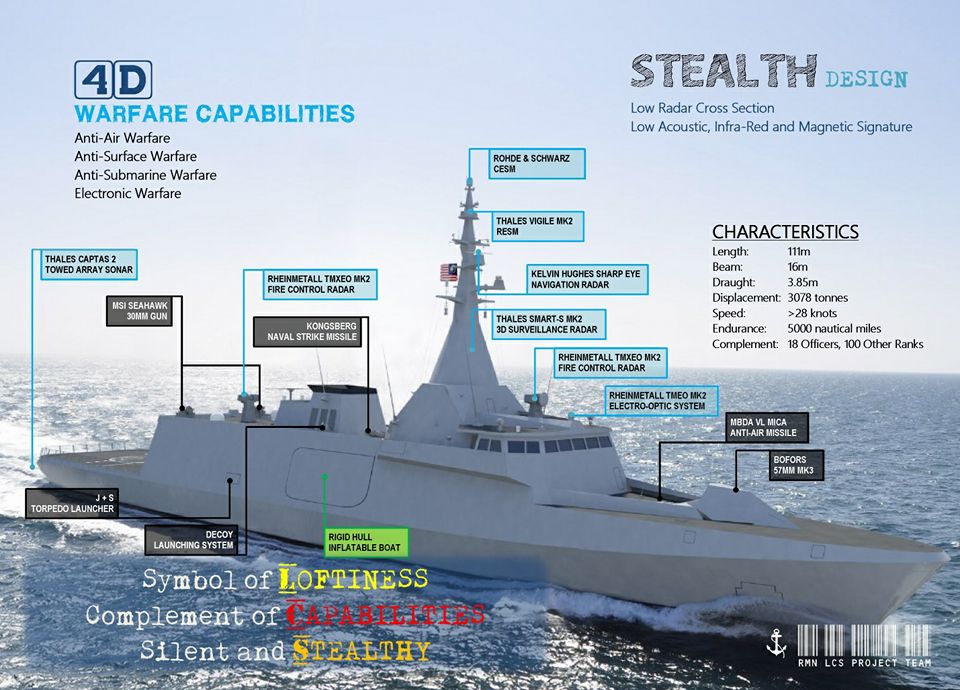
This must be the bridge
CD450
Rumored to be originally a german design, probably by those who came out with the Leguan bridge.
http://www.greatwallgroup.net/single-lane-gw-d-modular-bridge-product/
This is the details of the double lane version, but with the technical details applicable also for the single lane version.
http://www.greatwallgroup.net/double-lanes-gw-d-modular-bridge-product/
The main advantage over original baileys are the maximum single span achievable. The requiment is for 70m single span. Baileys usually max out at 50+ meters for a single span, before a pier needs to be built. The CD450 seems to be able to do 90+ meters.
Ah bailey bridge. If there’s one thing that embodies the phrase “nothing is more permanent than a temporary solution”, it’s this thing. Very popular in Sabah. If some random rural village needed a bridge, you bet they’re going to build this kind of bridge. Hell even in my hometown we have a 40-odd years old bailey bridge when this type of bridge is only supposed to be used until a more permanent concrete (or at least a box girdle) bridge is built and about the only maintenance done is the wood surface which is replaced when the old one rots or broke
Bailey bridge copies
https://stare.com.my/logistic-support-bridge-zb-200-lsb/
”A Bridge Too Far” has a great scene of a Bailey being erected.
I was under the impression we were buying assault bridges of a type similar to the
BR-90’s. Anyway one can never have too many bridges or engineering assets.
On chinese military engineering equipment
Some Jonyang made stuff that would make a nice addition to malaysian army engineering capability.
Jonyang JYL913 assault bridge. Would be a good addition to the 10 SKN RAJD (PARA) equipments
http://fdra-ejercito2.blogspot.com/2018/11/nuevo-lanzapuentes-chino-4×4.html
Jonyang JY813 to recapitalise the BV206 fleet
http://inews.gtimg.com/newsapp_bt/0/4368746100/1000
http://www.globalsecurity.org/military/world/china/images/jy813-image07.jpg
Jonyang JYL313-B armored backhoe loader
http://p3.toutiaoimg.com/large/pgc-image/a78faf5ba7da4f90bb903ca0c020e8c2
We don’t have enough engineering assets and sappers really. An assault bridge needs trucks and other items
gonggok – ”Would be a good addition to the 10 SKN RAJD (PARA) equipments”
”Would be a good addition” to engineering units whose job is to enable a bridging capability to maneuver units. Whether it’s ”a good addition to the 10 SKN RAJD (PARA)” per see is questionable/debatable as the unit needs something which can be easily or more practicably deployable; something with a smaller/lighter footprint.
As it stands the unit’s engineering assets [like those of similar units worldwide] are geared towards combat engineering support; i.e. as sappers to clear obstacles, IEDs/minefields; field works, etc, rather than bridging support. Britain’s Parachute Regiment at one time had an engineering element which had a bridging capability but this was done away with.
They also need to be closely integrated with the units they’re supporting; both need to train regularly. Something the Filipinos found very useful in Marawi were armoured bulldozers.
Whether it’s engineering assets, UASs, MBTs or SSKs all need to work together; none in isolation; none dominant. This is a lesson we learnt decades and decades ago and what the current situation in the Ukraine reminds us.
Azlan,
“Whether it’s ”a good addition to the 10 SKN RAJD (PARA)” per see is questionable/debatable as the unit needs something which can be easily or more practicably deployable; something with a smaller/lighter footprint.”
10 SKN RAJD (PARA) is equipped with quite a lot of heavy machinery, like excavators, dump trucks, backhoes, motor graders etc, also with gap closing/river crossing equipment such as the catamaran raft. Many of those are not easily deployable by air.
http://m.facebook.com/story.php?story_fbid=1580854502109015&id=368368760024268&sfnsn=mo
The JYL913 is probably the smallest instant bridge on a truck there is out there. Small enough to fit in a C-130, but able to span 13m gap. That is not much, but enough to cross large ditches, or partial damaged sections of a larger bridge.
http://upload.qianlong.com/2018/1121/1542789350510.jpg
http://upload.qianlong.com/2018/1121/1542789352848.jpg
Seems that they sell thode bridges as civilian equipment too
http://p3.itc.cn/q_70/images03/20201127/b3ceabdebc5d4f49be2e3394a612a23f.png
http://www.oemember.com/uploadfile/2020/11/27/20201127171735BwKXWA.jpg
gonggok – ”10 SKN RAJD (PARA) is equipped with quite a lot of heavy machinery, like excavators, dump trucks, backhoes, motor graders etc, also with gap closing/river crossing equipment such as the catamaran raft. Many of those are not easily deployable by air.”
All of those are intended to be deployed in circumstances where the unit has moved by land and has a secure lines of communications or has landed on and secured an airhead which can be expended into a forward operating base.
There is a reason why the bulk of airborne/heli assault units worldwide don’t have organic bridging elements; as it does not fit into CONOPS due to operational requirements or has to heavy/large a footprint. Bridges such as the JYL913 should be organic to maneuver elements to ensure they are there when needed rather than having to wait for them. .
Do we know which unit operates the BR-90’s?
Azlan,
“Do we know which unit operates the BR-90’s?”
Yes
The BR-90 is operated by 4 SKN RAJD (JN)
http://pictr.com/images/2022/05/17/BKppC9.jpg